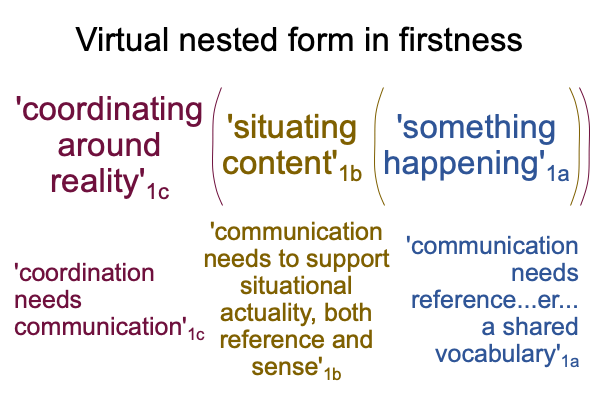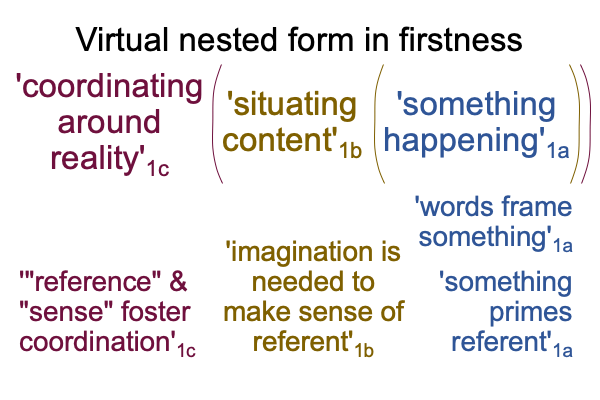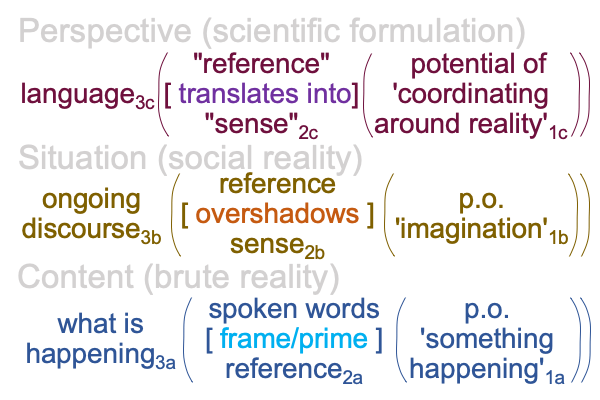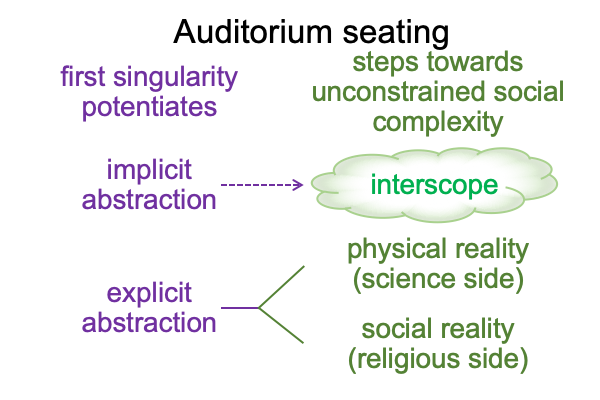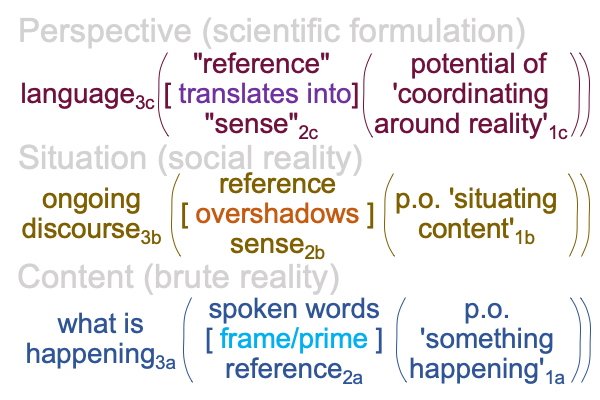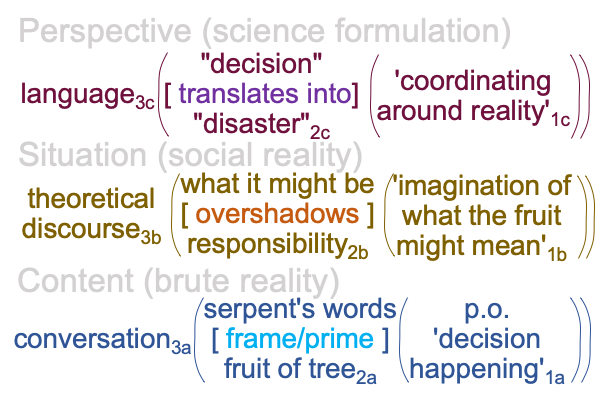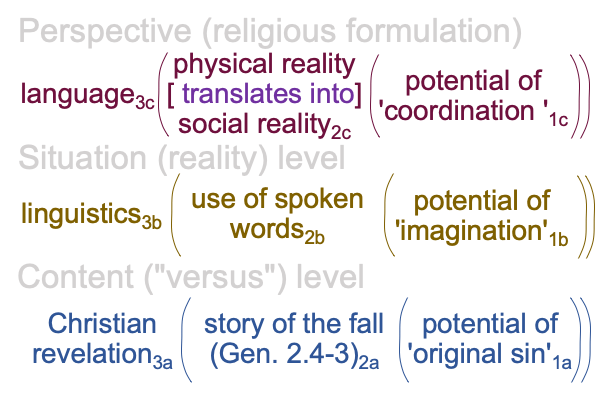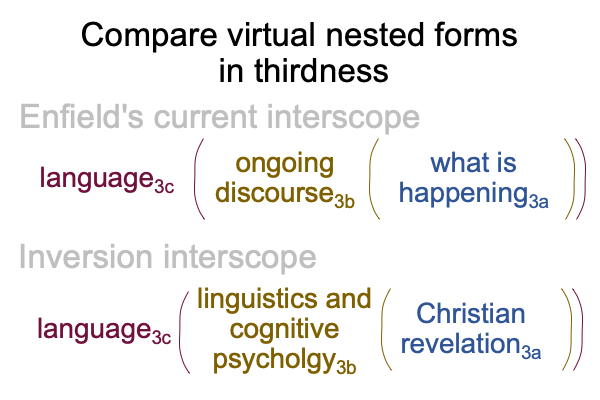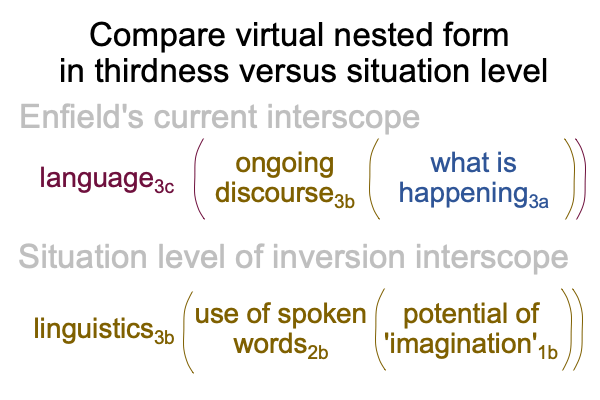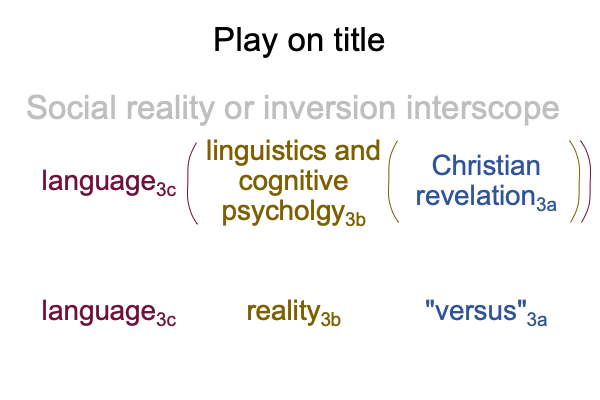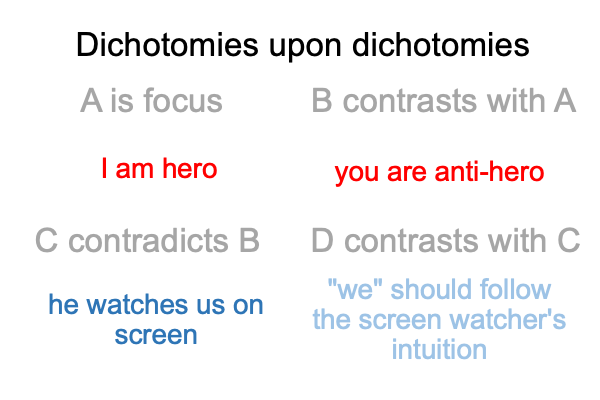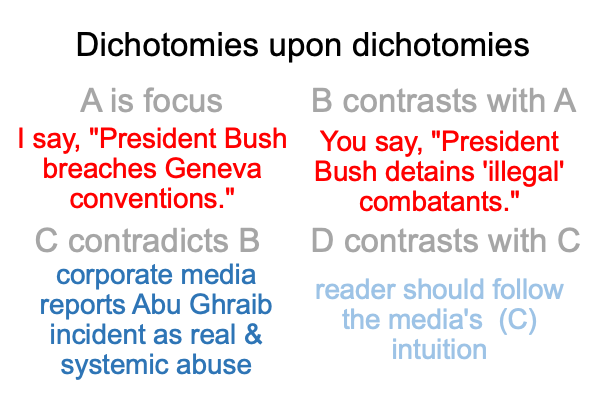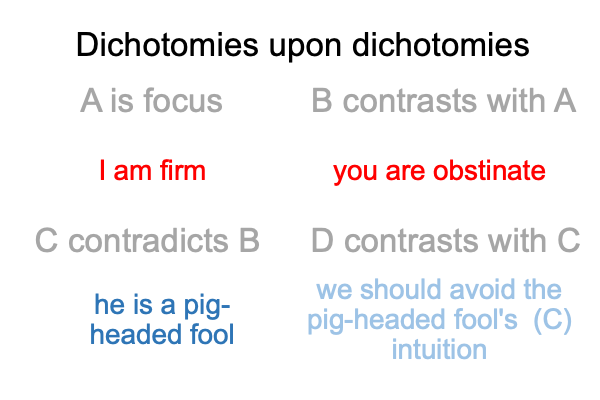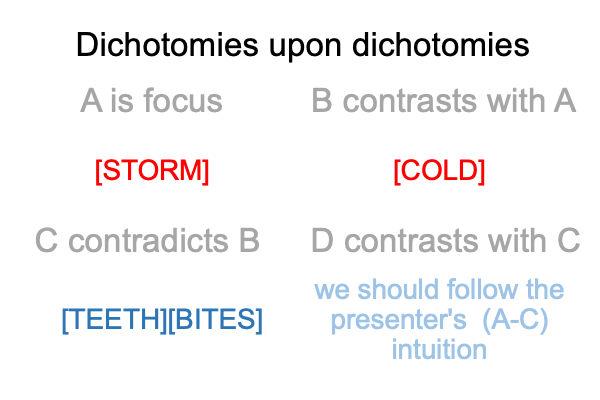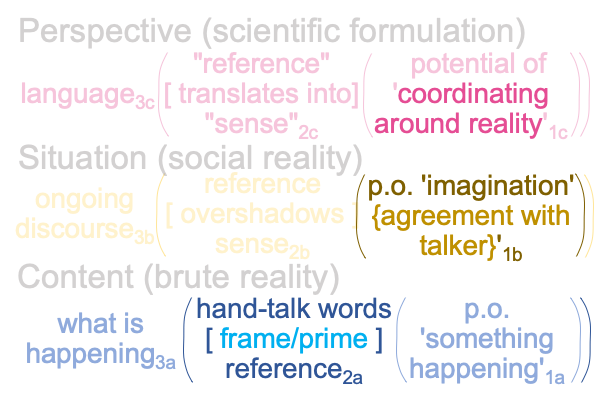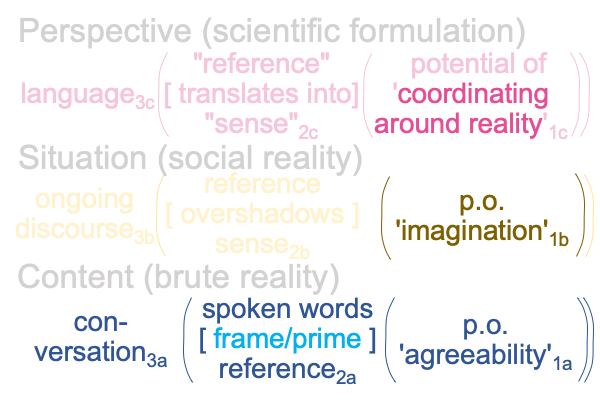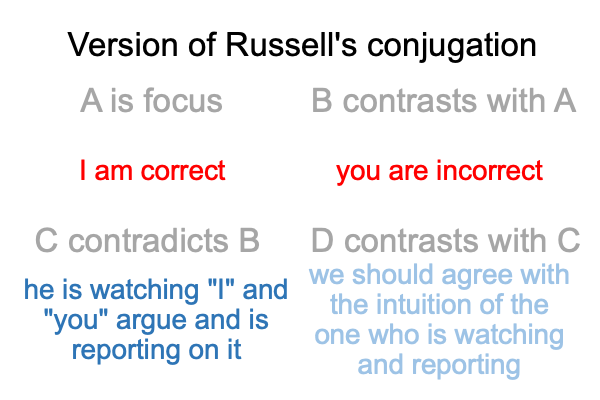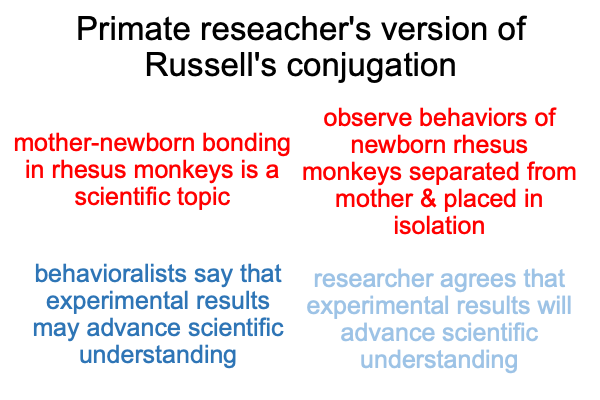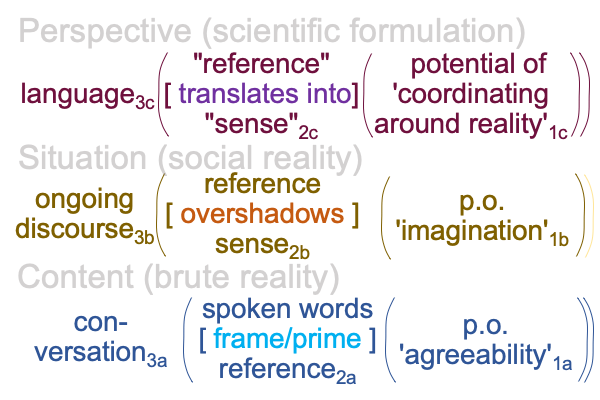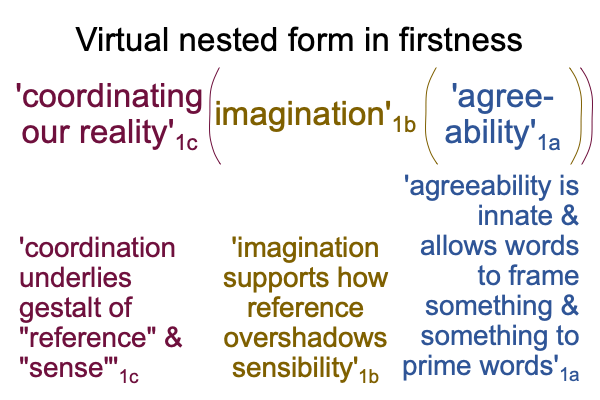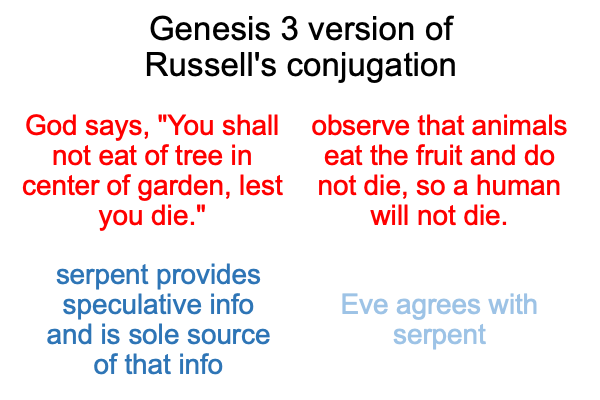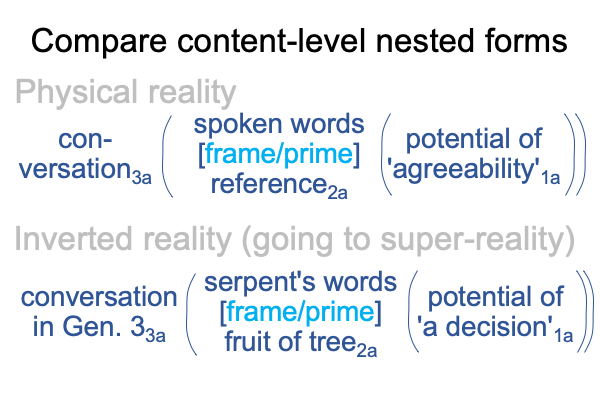Looking at N. J. Enfield’s Book (2022) “Language vs. Reality” (Part 12 of 23)
0941 Once upon a time, each manual brachial-word pictured or pointed to its referent.
One referent precedes one gesture-word.
Now, spoken words do not picture or point to anything.
Plus, two referents follow each spoken word.
0942 This may seem like a disturbing turn of events.
Should someone step forth and say, “It’s all okay. Spoken words do reference something other than themselves.”?
Maybe, those who study spoken languages should step up to the plate and say, “The function of words is to ‘refer’.”.
Does that suggest that reference2a is the same as reference2b?
0943 The Russian-born American linguist Roman Jakobsen (1896-1982 AD) realizes that the so-called “referential function” of spoken words is not sufficient. This is clear by the sequence of transformations taking place in Enfield’s interscope.
0944 Take a look at the content-level actuality.
At first, particular spoken words2a [stand for] a reference2a. This matches the age-old impression, where a particular cloud [stands for] a coming storm.
Then, the actuality2a becomes particular words [frame] a reference, and that configuration reverberates into the content-level normal context3a and potential1a echoing back the message that particular words [can be primed for] a reference2a.
Can this be the first step of the “conative function” of language? After all, “empty gasoline barrels” cannot be explosive because they have “no gasoline”. So, yes, smoking near the empty barrels is okay. Go ahead and light up.
0945 Please, consider the so-called “phatic function”.
Here spoken words2a may frame what is happening3a and the potential of ‘something happening’1a while not indicating what the actual reference is.
If the actual reference is watch where you are walking, then I say, “Mind the gap.”
0946 How about the “emotive function” of language?
Well, after spoken words2a [frame] reference2a, then reference2b [overshadows] sense2a, in the same way that the soul of Stevie overshadows his sister and takes over her body even as her emotions overwhelm her, not because Mr. Verloc said anything, but because Mr. Verloc didn’t say anything about his responsibility for Stevie’s demise.
Surely, that does not make scientific sense. But, it gives me the shivers.
0947 The two remaining functions that Jakobsen manufactures are the “poetic” and “metalingual” functions. Do these put the other functions into perspective?
“Poetics” is about style, I suppose. Rhetoric is the study of how all the other functions work to achieve a certain effect… or… affect2a.
“Metalingual” is about… well… “meta” means “crossing out of” and “lingual” means “mother tongue”, so that sort of gets me back to Mrs. Verloc. Metalingual is like a soul escaping a body, then looking back and labeling where it used to be.
Metalingual is like the art of translation. What one might say “reference” (the body) translates into “sense” (the soul), forming a coherent unity, an embodied soul2c, capable of situating the potential of ‘coordinating around reality’1c within the normal context of spoken language3c.
0948 Here is a picture, once again.
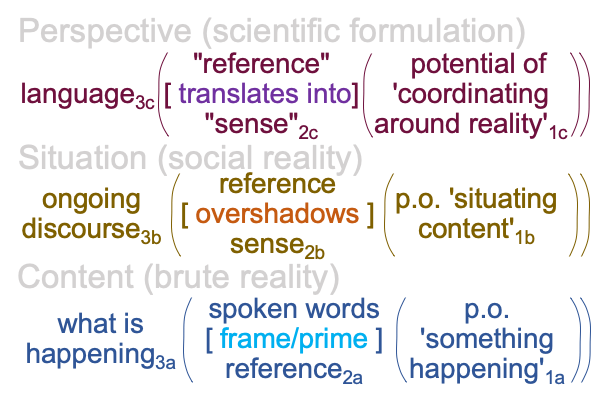
In the perspectivec-level actuality2, something about reference [translates into] something about sense.
0949 But, what about the secret agent?
What about the revenge-seeking soul lurking in the shadows, ready to step in when emotional distress provides an incentive for a sensitive soul to step out of a world of cruelty, shock and humiliation?
0950 All spoken languages have one thing in common.
They are not hand-talk or hand-speech talk.
They are speech-alone talk.
Speech-alone talk allows explicit abstraction.
And, that is what Roman Jacobsen offers to the world, explicit abstractions bereft of an implicit abstraction. He offers a model to replace the noumenon, the thing itself.
Enfield celebrates this triumph in the scientific study of language.
0951 The author cannot regard, because he does not know, the shamans in every hand-speech culture who resisted the transition to speech-alone talk, who fought the easy forgetting of the hand-component of their hand-speech traditions and who tried to prevent their culture from drifting into a diaphanous web of explicit abstractions, then into our current Lebenswelt.
Where is the celebration for them?
They are all dead.
Murdered, no doubt.
Indeed, one may wonder whether they will they return, like Stevie, in the guise of ideologies designed to capture the body when the soul is estranged?
Watch out when an alienated person, possessed by an ideology… er, shamanic spirit seeking revenge… quietly picks up the carving knife.
0952 All the origin stories of the ancient Near East depict a recent creation of humans.
Why?
The city-states of the Sumerian civilization cannot see beyond a time horizon defined as the first singularity. They cannot remember the Lebenswelt that we evolved in. They cannot recall who we evolved to be. They can only imagine that we (humans) are created, from mud, from seeds, from the blood or semen of gods, recently, in divine acts, not so long ago.
0953 Explicit abstractions, speech-alone labels, can carve up implicit abstractions as easily as Stevie can carve up Mr. Verloc with a carving knife held in the hand of Mrs. Verloc. The labels come leisurely and academically, so it seems that they really do represent technical functions of the linguistic process.
The modern intellectual is so proud of these spoken words, which appear like gems in disciplinary discourse. Oh, yes, clearly I aim for the emotive function, but the phatic function comes to the fore at the moment I say, “Beware. Your spoken words veil a noumenon, the thing itself, with a mechanistic model. And worse, you extol the veil, the shimmering screen of spoken words, as if you know what their referents really are.”

